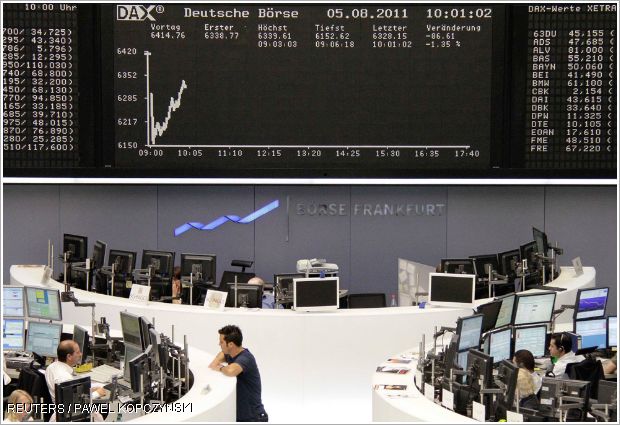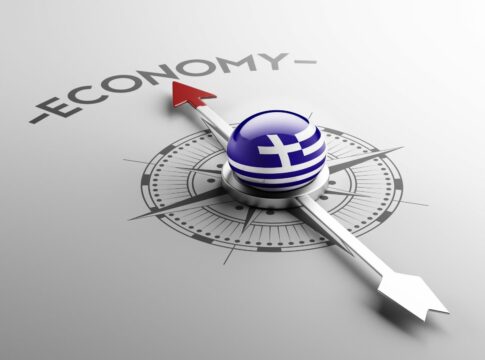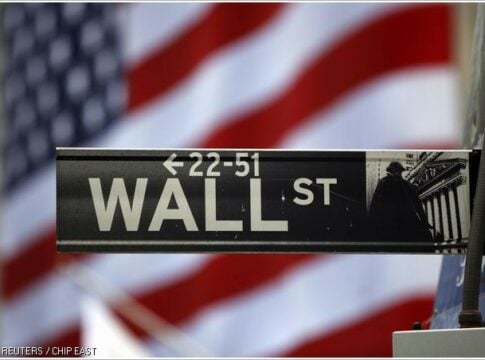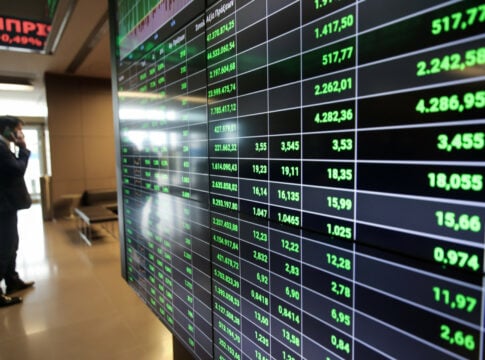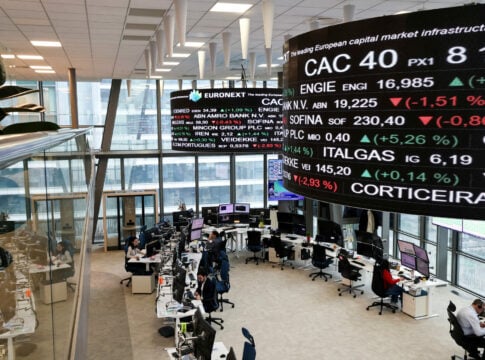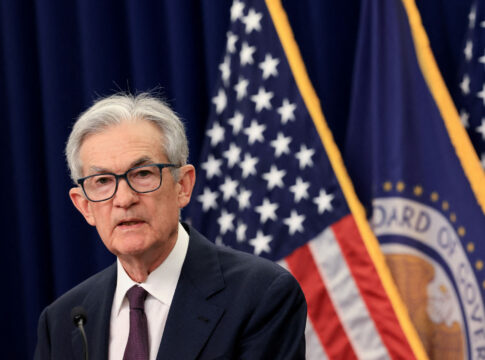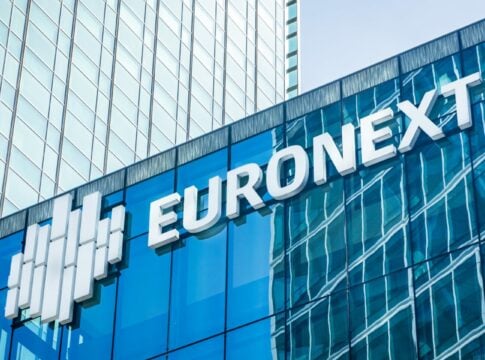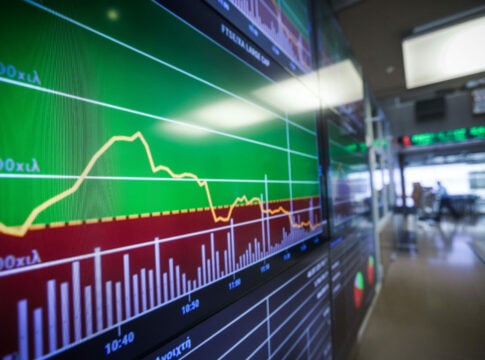Aν και όλοι οι μεγάλοι επενδυτικοί οίκοι δίνουν σταθερά από πέρυσι ψήφο εμπιστοσύνης στις ευρωπαϊκές μετοχές, επισημαίνοντας τις ιδιαίτερα ελκυστικές αποτιμήσεις τους σε σχέση με τις αμερικανικές, οι αποδόσεις, που έχουν προσφέρει τον τελευταίο χρόνο στους επενδυτές είναι κάτι παραπάνω από απογοητευτικές.
Σύμφωνα με υπολογισμούς της Wall Street Journal το τελευταίο δωδεκάμηνο ο πανευρωπαϊκός δείκτης Stoxx 600 έχει προσφέρει συνολική απόδοση (αύξηση στις μετοχικές τιμές + καταβολή μερισμάτων) μολις 0,3% σε όρους ευρώ. Στο ίδιο διάστημα και παρά την εφετινή διόρθωση ο S&P 500, ο πλέον αντιπροσωπευτικός δείκτης των αμερικανικών μετοχών προσφέρει συνολική απόδοση 14%.
Η μεγάλη διαφορά αποδίδεται εν πολλοίς στο ράλι του ευρώ έναντι του δολαρίου. Το ενιαίο ευρωπαϊκό νόμισμα έχει ανατιμηθεί 14% το τελευταίο διάστημα έναντι του αμερικανικού, κόντρα στη λογική, που θα το ήθελε να υποχωρεί από τη στιγμή, που η Ευρωπαϊκή Κεντρική Τράπεζα προχωρά με πολύ αργά βήματα προς την έξοδο από τη χαλαρή πολιτική, την ώρα που η Fed προωθεί σημαντικές αυξήσεις επιτοκίων. Η αισθητά πιο «σφιχτή» οικονομική πολιτική στις ΗΠΑ θα έπρεπε να ενισχύει το δολάριο. Ωστόσο η προοπτική ενός εμπορικού πολέμου και οι ισχυρές επιδόσεις της ευρωπαϊκής οικονομίας στρέφουν τους επενδυτές στο ευρώ.
Η συναλλαγματική ισοτιμία έχει μεγάλη σημασία για τις ευρωπαϊκές μετοχές, καθώς οι επιχειρήσεις του Stoxx Europe 600 αντλούν περίπου το 50% των εσόδων τους από το εξωτερικό, την ώρα που για τις εταιρείες του S&P 500 το αντίστοιχο μερίδιο είναι μόλις 30%.
naftemporiki.gr
The Citigroup Economic Surprise Index, a broadly tracked measure of how expectations are being met, has edged down in the U.S. but remains at multiyear highs, meaning U.S. data are still broadly matching forecasts.
In the eurozone, the index has dropped to its lowest level since March 2016.
“We still have the synchronized recovery in the global economy,” said Ewout van Schaick, head of multiasset at Dutch asset manager NN Investment Partners, which has €246 billion ($305.2 billion) under supervision. “But, at least for the moment, it can’t surprise more to the upside.”
Mr. Van Schaick removed his fund’s bias in favor of European stocks after purchasing managers’ surveys released last week showed that the eurozone economy expanded in March at its slowest pace since the start of 2017.
After that data, Citigroup’s strategists also downgraded their expectation of where they believe the Stoxx Europe 600 will finish this year, to 420 points from 460. On Wednesday, the index rose 0.5%, to 369.26.
Last week, Deutsche Bank AG analyst Sebastian Raedler downgraded his forecast of fair value for the index, from 400 to 360 this summer, citing declining economic momentum.
Stocks still look cheaper in Europe than in the U.S., with the Stoxx Europe 600 trading at 13.9 times the earnings it is expected to generate over the next 12 months, compared with 16.3 times for the S&P 500. But the gap has narrowed considerably in the past two months. On top of large selloffs in U.S. shares, analysts have steadily downgraded their expectations for European earnings this year, while upgrading the S&P 500’s, according to data provider FactSet.
“We’ve been relatively cautious on the U.S. versus the rest of the world for some time,” said Richard Turnill, global chief investment strategist at BlackRock Inc. “We’ve changed that view.”
Investors also worry about negative impacts for exporters if new U.S. policies trigger a full-blown trade war. Concerns for exporters would heighten if the euro gets a boost when the central bank bond buying that has kept the currency lower, and stocks higher, is withdrawn in September.
To be sure, most asset managers still see good opportunities in parts of Europe.
Created with Highcharts 6.0.4Stocks in Europe are cheaper than inthe U.S., but the gap has narrowed…Stocks in Europe are cheaper than in the U.S., but the gap has narrowed…Difference between S&P 500 and StoxxEurope 600 price-to-earnings ratios.* A highernumber makes European stocks relativelymore attractive.Difference between S&P 500 and Stoxx Europe 600 price-to-earnings ratios.* A higher number makes European stocks relatively more attractive.Source: FactSet*12-month
Recent concerns about increased regulation for technology companies could be a comparative advantage for European indexes. The tech sector has been the main driver of U.S. stocks over the past year and makes up 25% of the S&P 500, but only 4.6% of the Stoxx Europe 600.
Southern Europe, in particular, still looks attractive for some investors.
While the more internationally focused German DAX stock index has dropped 5% in the past year, Italy’s more domestically oriented FTSE MIB is up 9%.
“We are of course bullish on southern Europe,” said Joseph Oughourlian, chief executive of European hedge fund Amber Capital. “Northern Europe is historically more exposed to China, tech and global trade, and these are complicated themes right now for an investor.”


